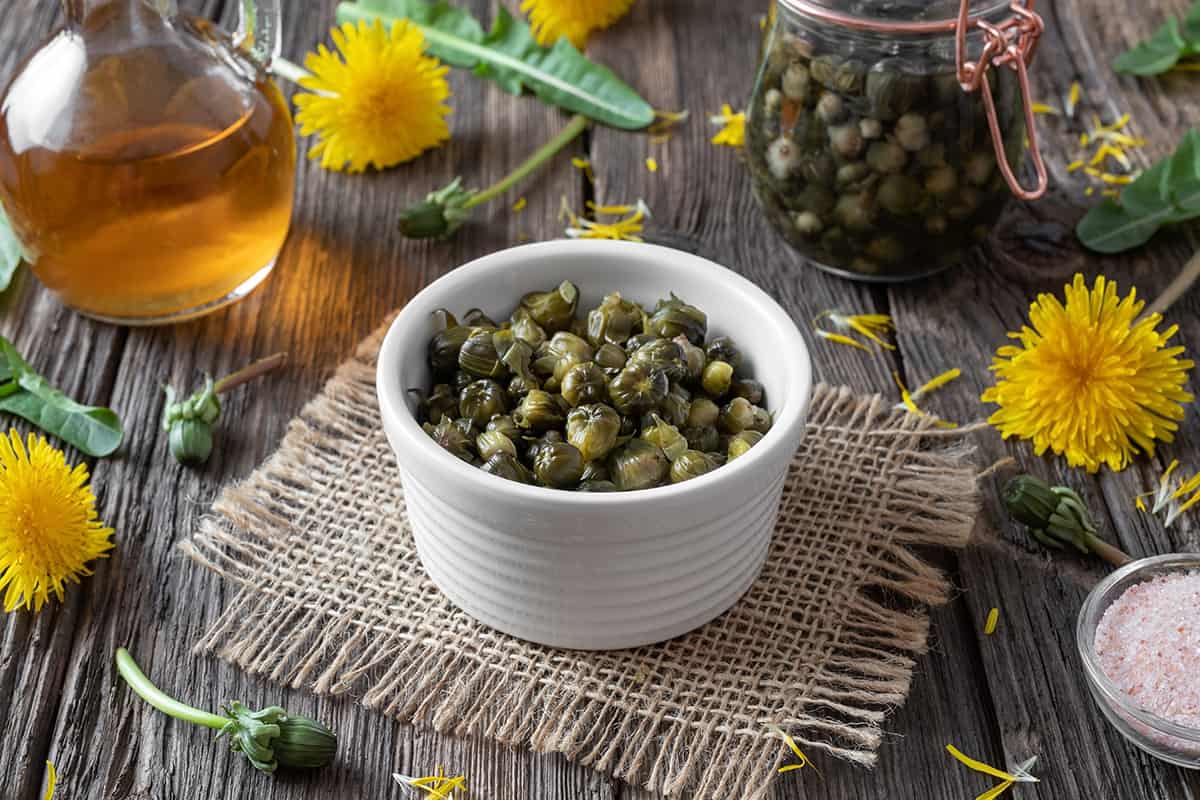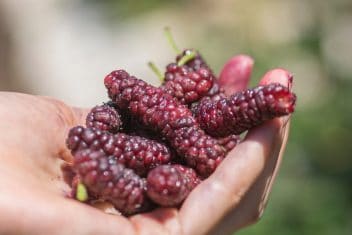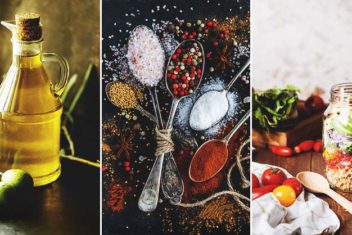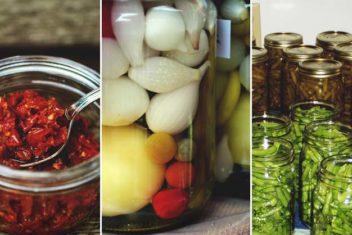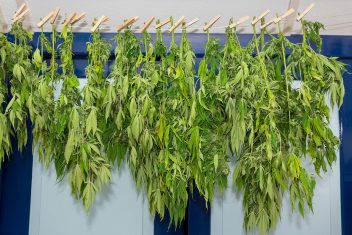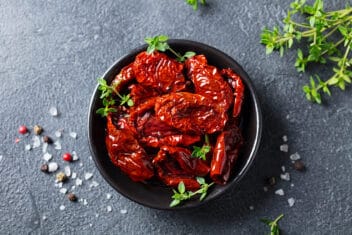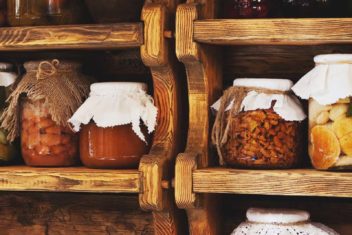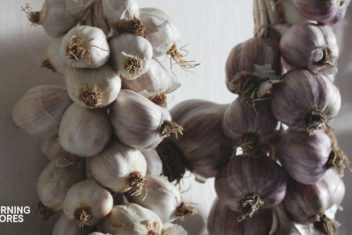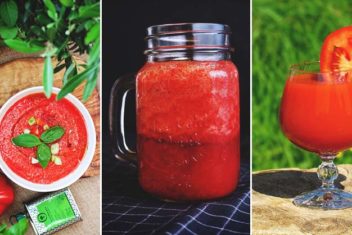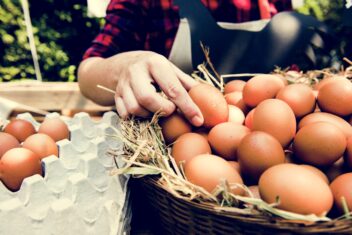Stocking the pantry for the winter months is a must for self-sufficiency. Sure, in a best-case scenario, you can pop down to the supermarket for essentials in the dead of winter. But that’s not always an option.
Additionally, although we put our best efforts into growing enough food to feed our families, foraging for extras can help bulk up our cellars.
Below are 16 wild foods to pickle for long-term storage. You may be surprised to discover how much abundance is available if we take the time to look.
The Best Plants to Forage and Pickle
As a general rule, the vinegar to water ratio you’ll want to work with when you forage foods to pickle is two parts vinegar to one part water.
This will create a brine that’s acidic enough to preserve things while diluted enough so your jaw doesn’t ache when you eat the contents.
Be sure to consult a preserving guide like the Ball preserving book for exact brine recipes and ratios. I just add salt to taste or salt and sugar for semi-sweet things like pickles, but that’s not a precise measurement.
As always, check local laws to see whether any of these plants are protected or endangered in your area before harvesting them. Similarly, ensure that you’re aware of wildlife laws about hunting, fishing, egg gathering, etc.
1. Dandelion Bud Capers
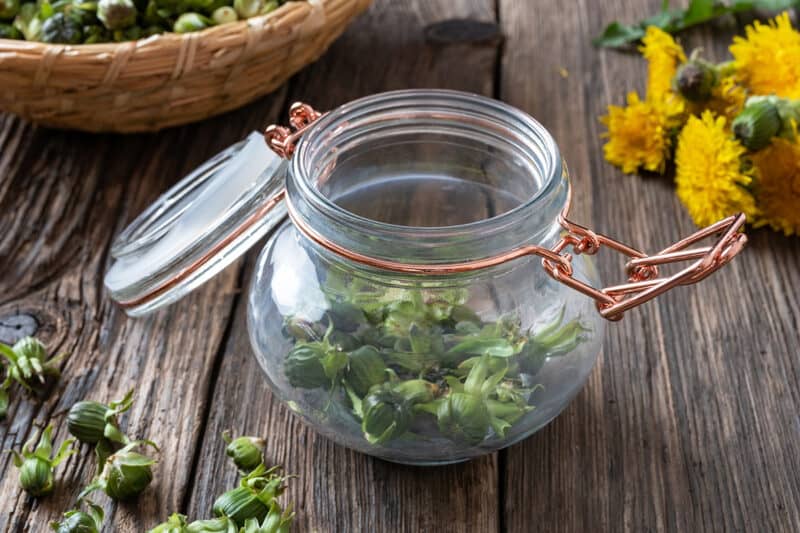
Capers can be ridiculously expensive at the grocery store, but they’re cheap and easy enough to make at home. Or at least you can forage and pickle a version of them.
Harvest dandelion buds when they’ve just appeared above the basal rosette leaves. They’ll be small and densely packed. Harvest about two cups’ worth, if you can.
Actually, if you have kids you need to keep occupied, send them out to do this task.
Once you have two cups worth, rinse them and drain them well. Then mix 2/3 cups vinegar with 1/3 cup water and about one teaspoon of sea salt in a saucepan.
Move the buds into a clean, sterilized jar and bring the vinegar mixture to a boil. Pour the boiling liquid into the jar, leaving 1/2 an inch of headspace, then seal. Process in a water bath for 10-15 minutes.
You can also make these with ox-eye daisies if you catch them early enough. I’ve found that there are a lot more dandelions around than daisies, and the bees around here like daisies better. So I harvest the dandelion buds instead.
2. Wild Garlic (Ramps)
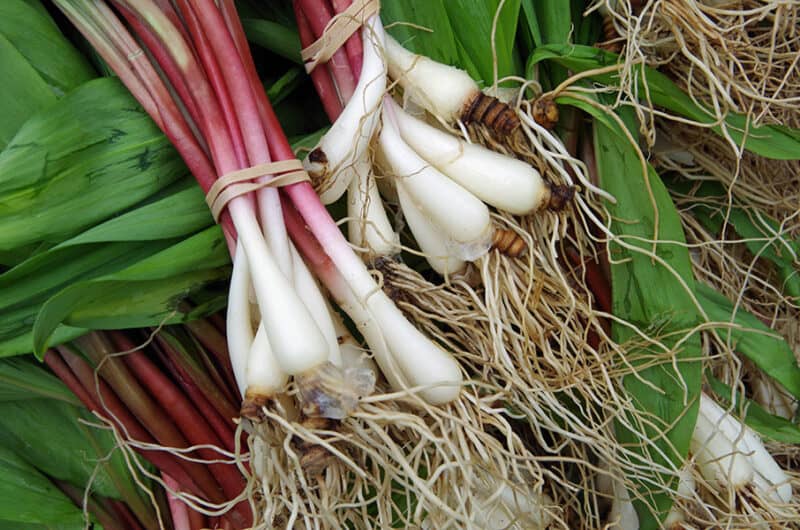
Ramps are some of the tastiest wild foods you can gather and pickle. They’re also endangered in many places, so if you’re going to forage for them, please do so sparingly.
You can pickle these wild garlic buds and flowers to add to dishes, or you can use the whole plant as ingredients in other recipes.
This ramp kimchi, for example, is fantastic. If you don’t have enough ramps for the recipe, bulk it up with green onions or leeks.
Although this will keep in the refrigerator or cold cellar for several months, you can extend its shelf life by water bath canning.
3. Spruce Tips

If you like bright, lemony flavors, then be sure to take full advantage of spruce tips when they appear in early springtime. You’ll see tender, soft, bristly tips appear on the spruces around you.
Try tasting one raw, and you’ll find that they have a bright citrus flavor. This flavor remains intact when you pickle them and can be complemented by different spices that you add to the brining mixture.
Do some research to find a pickled spruce tip recipe that you really like. When it comes to wild foods to pickle, I tend to keep them as close to their raw form as possible.
Other people like to get fancy with them, which is totally valid. You might want to experiment with a few different combinations to see which you like best.
4. Cattail Hearts
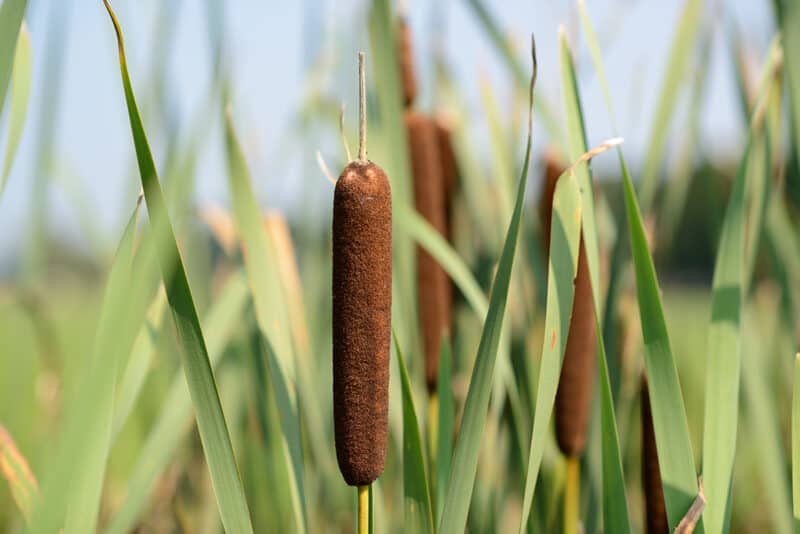
Young cattail hearts taste quite a bit like asparagus if you steam them. They also take on other flavors easily, making them ideal to forage and pickle.
Harvest a big bunch of shoots, and cut them into pieces that will fit comfortably into Mason jars. Then remove the outer skin, leaving just the white/pale green heart intact.
Drop a couple of garlic cloves into each jar, along with a generous sprig of fresh dill and about 1/2 a teaspoon of pickling spice. Then add your cattail hearts until they’ve packed the jar. Add smaller chunks to fill any spaces.
Bring a vinegar-water mixture to a boil, with either salt or salt and sugar added to taste. I suggest tasting it before you bring it to a boil.
Pour this into the jars, and slop around in there with a chopstick to release any air bubbles. Then cap and seal them, and process in a boiling water bath for 10 min.
5. Burdock Root
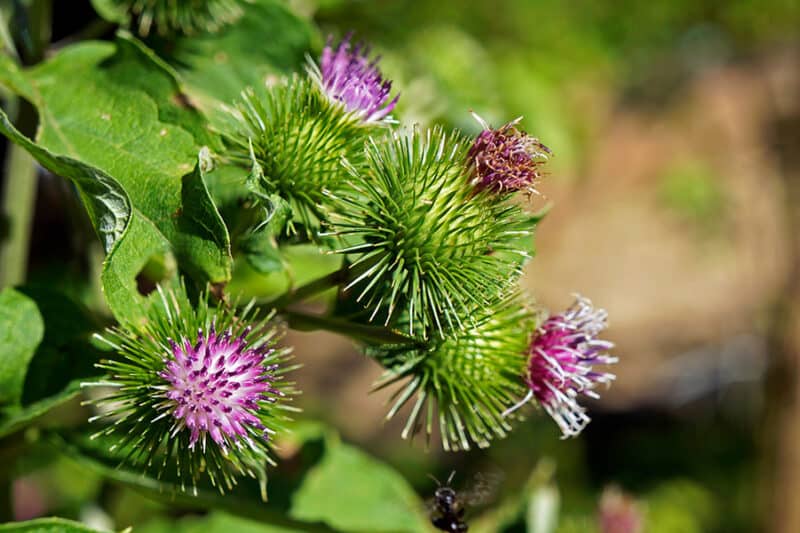
You know those enormous plants that like to attach their burrs to your clothing, pets, and children, to plague you forevermore? They happen to have pretty tasty taproots, so you won’t feel bad for digging them up.
Try to choose roots from plants that are two-four years old. Anything smaller than that will be too insignificant for the effort, and older roots are woody and bland. You can determine a burdock plant’s age by its size.
While you can use any vinegar to pickle the roots that you forage, I recommend going with Japanese rice vinegar to make yamagobo. This stuff is incredible in hand rolls, used as a condiment for poke bowls, or in noodle dishes.
6. Wild Mushroom Pickle Preserves

If you’re comfortable enough with gathering wild mushrooms that you’re not going to poison yourself, consider preserving some of them as well.
Chanterelles, morels, and chicken of the woods are great for wild mushroom conserve, which goes beautifully with game fowl like partridge, grouse, and wild turkey.
7. Pickled Wild Blueberries
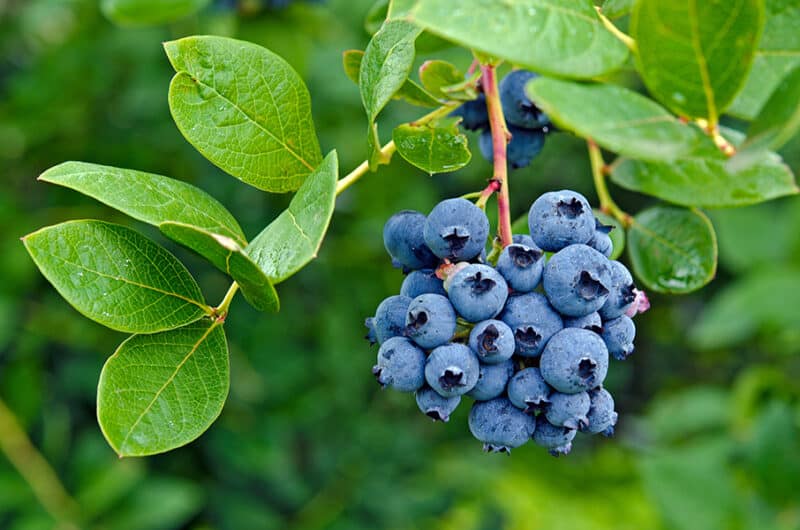
You can, of course, forage and pickle any wild berries. Most of them are so delicious that people don’t think about preserving them in this manner.
However, if you feel like expanding your preserving repertoire past jams, jellies, and bags of frozen fruit, definitely try pickling extra blueberries.
These taste incredible paired with game meat like venison, elk, and moose. They’re also wonderful served alongside smoked trout.
8. Fiddleheads

Have you tasted fiddleheads before? They’re the unfurled greens of certain fern varieties, and resemble the curled tips of fiddles or violins, hence their moniker.
If edible fern species grow near you, then be sure to harvest and preserve these beauties when they appear. I like them best sauteed fresh in butter, but they’re great pickled as well.
Make sure you know exactly which fiddlehead fern species you’re looking at before harvesting these and eating them, as some species are quite toxic.
9. Jerusalem Artichokes
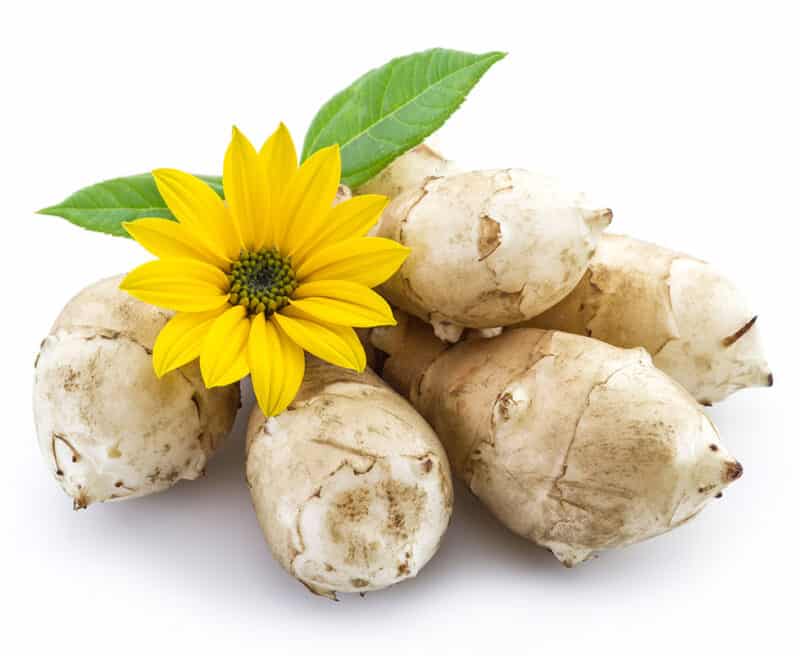
Sunchokes are astonishingly common all over North America. They look like a cross between sunflowers and yellow daisies, and have delicious edible tubers.
After you forage them, you can pickle these in small pieces, and they’re great with cheese and olive platters, or with curries.
If you want crisper pickled sunchokes, then add a bit of “pickle crisp” powder. You should be able to find that in the spice section at your local supermarket.
10. Milkweed Pods

You know how milkweed pods burst open with fluff-covered seeds every autumn? Well, about a month before that happens, those little pods are green, crunchy, and ideal for pickling.
I’ve never made these myself, but I’ve tasted pickled milkweed pods, and they’re really interesting.
If you’ve never had them before, you might want to try tasting them first before putting a ton of effort into making them. Also, note that people with latex allergies can react to milkweed.
11. Wild Grape Leaves
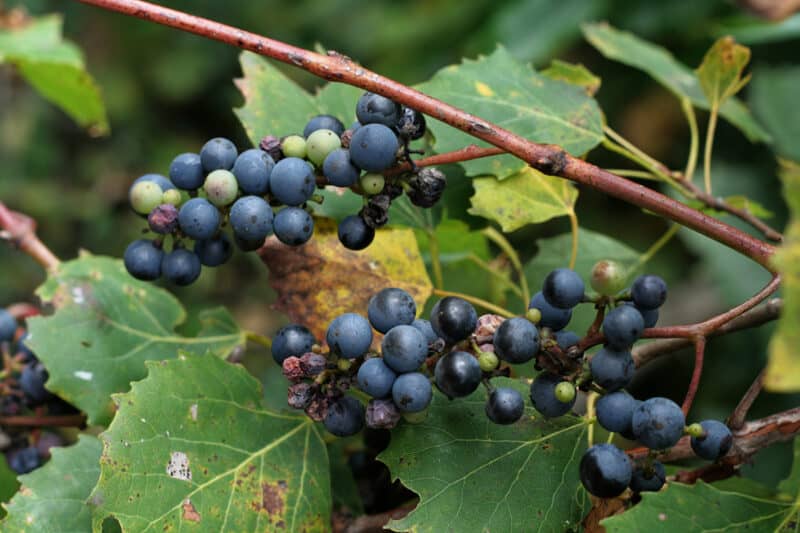
One of my favorite Middle Eastern foods is stuffed grape leaves. I don’t know about you, but I can hoover dozens of these at a time. The good news is that wild grape leaves are edible and are ideal wild foods to pickle.
By preserving these leaves in lemon juice, you can use them later to wrap up all kinds of things, from domestic ingredients to wild and foraged ones.
Just make sure that you’re harvesting wild grape leaves and not moonseed leaves. Moonseeds are toxic to humans, and that goes for the leaves as well as the berries.
Remember that wild grapes have tendrils, while moonseed vines don’t. Also, moonseed berries have single seeds shaped like crescent moons. Wild grapes have a few teardrop-shaped seeds instead.
12. Queen Anne’s Lace Roots
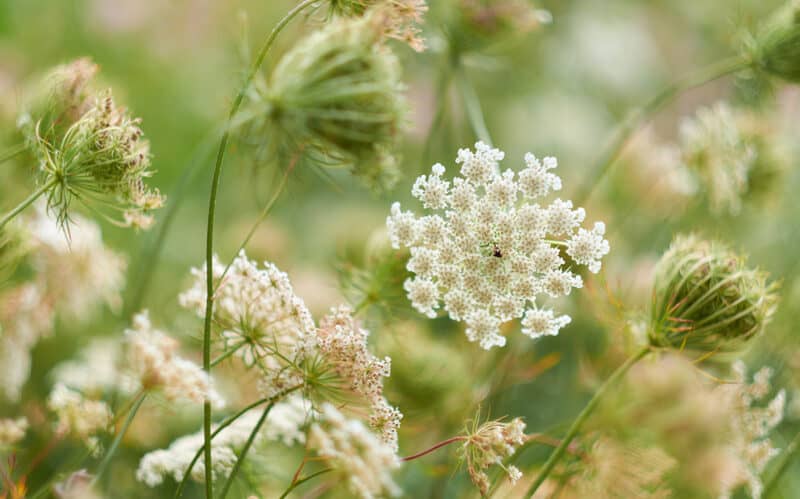
The roots of Queen Anne’s Lace plants are crunchy and taste like carrots. This is unsurprising, as Daucus carota is the wild ancestor to modern, cultivated carrots.
If you’d like to pickle them, forage and harvest them when the plant is still young (as in, when it’s still flowering but hasn’t gone to seed yet). Otherwise, the roots get woody and significantly less palatable.
*IMPORTANT NOTE*
Queen Anne’s Lace doesn’t just grow in the same conditions as its deadly cousin water hemlock (Cicuta); it is often mistaken for that plant.
The MAIN way to tell these plants apart is by the one dark red or purple spot in the center of the dense floral umbel. The roots smell strongly of carrot, and the stems are green with short little white hairs.
If you’re not absolutely sure of what you’ve got in your hands, don’t put it in your mouth.
13. Sea Asparagus (Salicornia sp.)
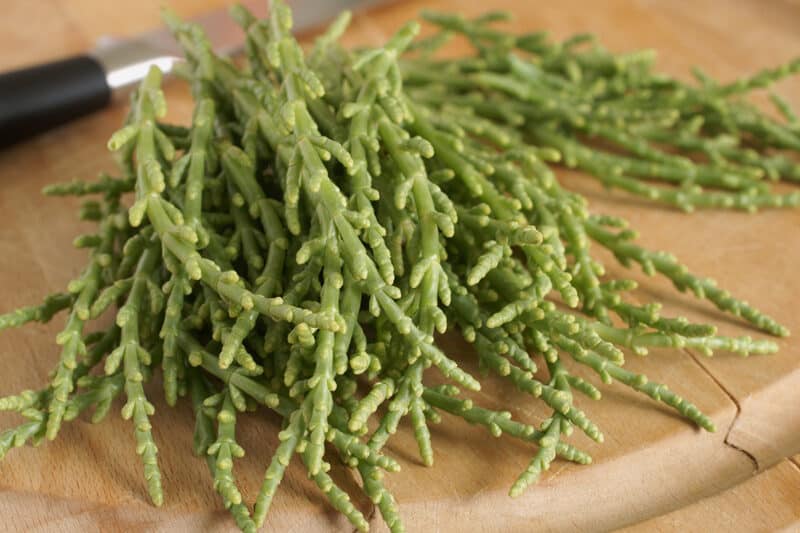
If you live along the eastern coast of North America or anywhere coastal in the UK, you’ve probably come across this edible sea green.
It’s known as “marsh samphire” in England, and either “sea beans” or “pickle grass” in the US and Canada.
Interestingly, I recently learned that Acadian French speakers in the Maritime provinces refer to it as “titines de souris”… er, “mouse teats.”
This is a great recipe, though I skip the star anise. Samphire has a lovely briny flavor on its own, you don’t need to befoul it with licorice.
14. Prickly Pears
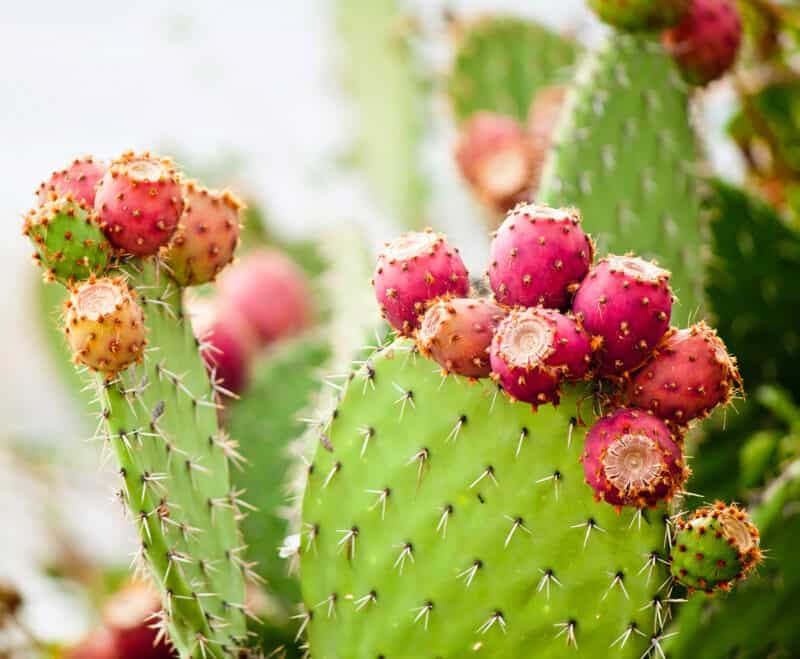
If you live in a state that’s hot enough for prickly pears to grow wild, then be sure to pickle some of these for the pantry too!
You won’t necessarily need to batten down the hatches for winter’s onslaught, but it’s great to be able to enjoy wild foods whenever the whim strikes, right?
I’ve had savory pickled nopales on enchiladas and have also tried them in a sweet jam form. Maybe experiment to see which you like best and put that in the for pantry storage.
15. Game Meats and Fish
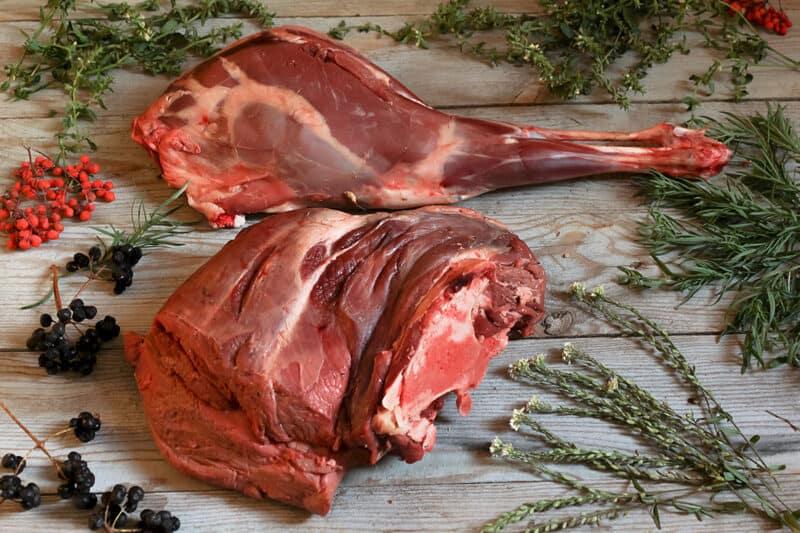
I’m putting these under the same category because you can pickle pretty much any fowl, meat, or fish. Most people prefer to preserve these meats with a pressure canner instead, but pickling is a quick, easy alternative.
Note that pickled and brined meats are seriously salty. This can be off-putting to some palates, but it’s moderately fixable.
Soak pickled meats in water for an hour before adding to other recipes to significantly reduce the salty/pickle flavor. Also, be sure to use other ingredients that counteract the acidity and saltiness.
16. Eggs
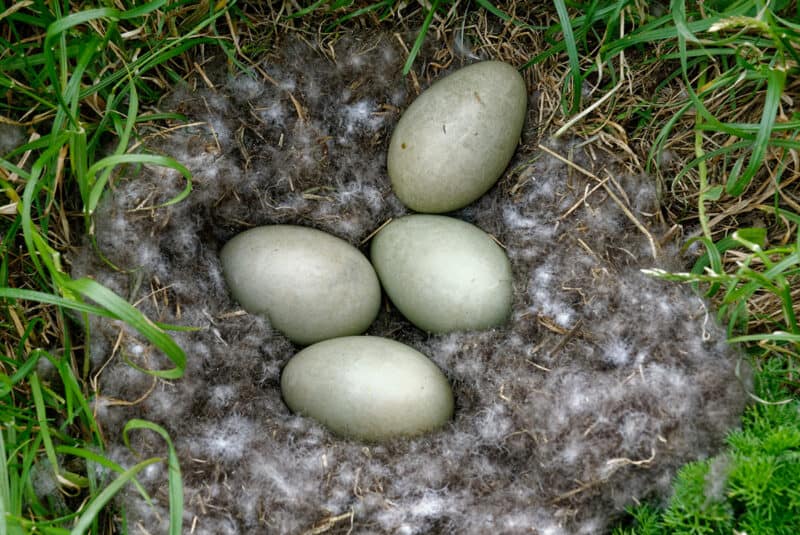
This one’s a bit sticky.
Gathering wild bird eggs for the sole purpose of eating them is illegal in many places. That said, if you’re in a dire situation and desperate for food, then there’s some wiggle room.
For example, if the power grid goes down and you don’t have access to a grocery store, but there are a lot of wild geese and ducks nearby…
Of course, you can pickle eggs from your own flock(s) as well.
Just remember to candle the eggs before cooking them to make sure there isn’t an embryo growing inside. Because that would be horrific.
